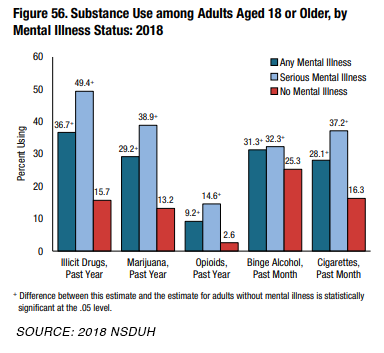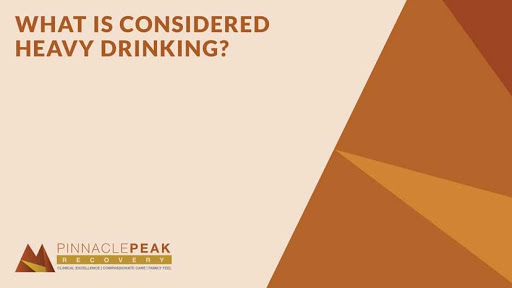What Is Considered Heavy Drinking?
Alcohol consumption in large quantities is usually divided into two categories: (1) how much someone consumes and (2) how quickly they consume it. Since it is legal to buy it and drink if someone is over the age of 21, the simple act of drinking doesn’t tend to raise eyebrows and is considered typical behavior.
When someone’s actions cause issues in social situations, you notice yourself or a loved one drinking frequently, or someone tends to “fall off the radar” and become a no-show at functions or work, these are all warning flags that alcohol may be a problem.
Binge-drinking is defined as a pattern of drinking where a person’s blood alcohol concentration (BAC) reaches 0.08 g/dl (grams per deciliter) or above. This typically happens when men consume five or more drinks or women consume four or more drinks in about two hours.
About 20% of alcohol is first absorbed into someone’s bloodstream from the stomach, and the rest more gradually through the small intestine. From the bloodstream, it makes its way to the liver, which can process one ounce per hour.
As the alcohol backs up, the side effects of alcohol begin to build as well. Most notably, people will feel the buzz—as it’s so often called—to describe the initial high stages of speaking louder, laughing, increased confidence and friendliness, feeling more emotional, speaking more philosophically, or reacting in anger or sadness.
By drinking in a slower manner and smaller quantity, the body will have the opportunity to process a smaller amount of alcohol and avoid the associated roller coaster side effects. Research indicates most people who binge-drink do not have a severe alcohol use disorder and might just partake in an event that lasts longer, such as a party or a concert, when their usual patterns are disrupted. Those who make going out a regular event or are binge-drinking at home while watching television are more at risk of making it a chronic pattern.
Heavy drinking is defined slightly differently by professionals but most typically centers around the frequency and quantity of drinking.

The National Institute on Alcoholism and Alcohol Abuse (NIAAA) goes a step further and defines heavy drinking in daily terms as four drinks for men and three drinks for women. The NIAAA defines binge-drinking the same as the CDC.
Moderate drinking is considered not exceeding two drinks for men and one drink for women daily. When this level is exceeded and meets the level of binge-drinking or heavy alcohol use, the person is considered a chronic drinker who has a condition classified as having a substance use disorder.
The distinction between moderate and heavy is important to keep in mind with your approach to alcohol consumption. When you notice yourself or a loved one slipping from a controlled level of enjoying a drink or two with a friend occasionally to staying for hours drinking nightly, you might want to check your habits.
- Has your drinking become habitual?
- Are you consuming large quantities?
- Do you have trouble recalling activities the next day (blacking out)?
- Are you missing work or family commitments?
- Are you participating in risky behavior of a sexual nature or driving under the influence?
- Have family members expressed concern, causing you to isolate yourself to continue your behavior unbothered?
Substance use disorders (SUD) describe someone’s preoccupation, inability to control, chronic use, and withdrawal symptoms when stopping the use of any drug such as illicit drugs, prescription drugs, tobacco, and alcohol. Tobacco is the most common SUD in the United States and 80% of alcoholics are smokers as well.
Co-Occurring Disorders With Alcohol
For many people, using one substance goes hand in hand with another.
Here are some common examples:
- It can seem second-nature to light a cigarette when you sit at a barstool with a bottle of beer.
- If you want to get started quickly with a night of partying, you might take a hit of cocaine for the fast high and then maintain it with alcohol throughout the evening.
- You might think following an antidepressant with alcohol will balance each other’s high and low factors.
For other people, they may reach for alcohol to cope with a mental struggle.
Case in point:
- Anxiety or depression may lead someone to manage their stress or sadness with alcohol.
It is not unusual to have co-occurring disorders with substances or have a SUD and a mental health disorder. The numbers have been rising, according to the National Survey on Drug Use and Health (NSDUH), which is administered by the Substance Use and Mental Health Services Administration (SAMSHA). In the 2018 survey, 7.2% of adults age 18-25 and 3.7% age 18 and older met these criteria.

Heavy Drinking Brings Heavy Health Risks
When your daily activities center around drinking, an active lifestyle often becomes a sedentary lifestyle. A stomach full of alcohol mistakenly gives a person the impression of being full and important nutrients are not consumed.
Weight gain from empty calories typically centers in the stomach area. As the liver struggles to process alcohol, a yellow tinge may form on the skin or whites of the eyes.
Alcohol use can exacerbate existing conditions such as diabetes, high blood pressure, pain, and sleep disorders.
It can also increase risks for:
- Breast cancer in women
- Depression
- Heart disease
- Liver disease
- Stomach bleeding
- Cancer (oral cavity, esophagus, larynx, pharynx, liver, colon, and rectum)
- Wet brain (brain disorder for vitamin B1 deficiency related to poor nutrition called Wernicke-Korsakoff syndrome and leading to irreversible confusion, muscle coordination issues, and possible hallucinations; it is reversible if caught early)
Physical issues aside, an alcohol use disorder can be devastating to a family, children, and the well-being of the person with the addiction. The stress that comes with worry, finances, unpredictable behaviors, home disruption, loss of jobs—the list can be exhausting and seem unmanageable but there is hope with treatment and recovery.
Your health and mental well-being are important and you should embrace every opportunity with treatment for alcohol and give yourself the self-care you deserve. Recovery and a new path for your life are within reach. Pinnacle Peak Recovery provides clinical excellence, compassionate care, and a family feel at its Scottsdale treatment center. Call us today at 866-377-4761.



